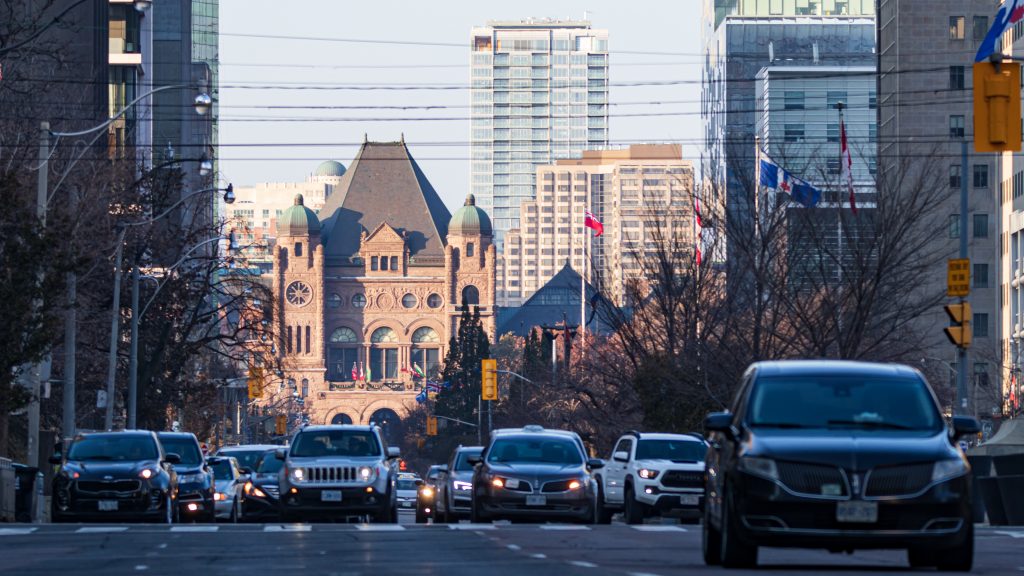Leaders in the residential sector say a new piece of legislation introduced by the Ontario government will help move the needle to get closer to the government’s goal to build 1.5 million new homes over the next 10 years.
“The More Homes Built Faster Act will make it, in our opinion, it easier to build more homes quickly, reduce the cost of housing, cut red tape and really be the foundational piece of policy that was required to build the 1.5 million homes that are needed in the next decade,” said Dave Wilkes, president and CEO of BILD. “We really see this as a once-in-a-generation piece of legislation.”
If passed, the legislation would ensure that cities, towns and rural communities have a mix of ownership and rental housing types, from single-family homes to townhomes and mid-rise apartments.
The act, along with the Strong Mayors Act, is a step in the right direction and sets the tone on how the province is going to approach the housing crisis, said Luca Bucci, CEO of the Ontario Home Builders’ Association.
“Prior to this piece of legislation, the policy framework surrounding homebuilding would have made that 1.5 million homes a bit difficult to achieve,” he said.
“To put it into perspective, the best housing start year we’ve had in the last two decades we hit 100,000 housing starts and that was last year. In order to hit that 1.5 million target we would have to increase the best year that we performed by a factor of 50 per cent and achieve that efficiency year-over-year for the next 10 years which just wasn’t possible under the old policy framework.”
The plan, which contains 50 actions, aims to reduce government fees and fix development approval delays.
It supports the development of gentle density, or housing like triplexes or garden suites to bridge the gap between single-family homes and highrise apartments. It would also remove exclusionary zoning which allows for only one single detached home per lot and allow property owners to build three units on a lot without lengthy approvals and development charges.
The plan also includes creating a new attainable housing program; increasing the Non-Resident Speculation Tax rate from 20 per cent to 25 per cent; freezing and reducing government charges; building more density near transit; unlocking innovative approaches to design and construction; removing red tape to get shovels in the ground faster; and increasing consumer protection measures for homebuyers and consulting on ways to help more renters become homeowners.
“Now developments under 10 units don’t have to go through site plan approval,” said Bucci. “That, I imagine, is going to take months off the construction process of smaller development sites. You look at some of the work that they are doing with development charges, parkland charges, community benefit charges. They’re going to cap these fees and bring in gradual incremental increases which is going to help our members manage costs and ultimately put out a more attainable product for the new homebuyer and will help us manage our projects much more efficiently and in a way that we are going to be able to get supply online more quickly.”
Richard Lyall, president of the Residential Construction Council of Ontario, said this is the most important piece of housing legislation introduced by this government.
“This is very ambitious and this is really going to move the needle,” said Lyall.
“There is a lot of work to be done going forward but I would say there is now a plan.”
All three stakeholders agreed an important part of the legislation is the introduction of municipal housing targets, but Bucci said there is a bit of lack of clarity in that area.
“The government did break down by municipality how each one would have to perform over the next 10 years to get to that 1.5 million new homes,” he explained. “The question that we have is if municipalities aren’t meeting those targets what is the government going to do to ensure that they are?”
In a press conference Oct. 26, Toronto Mayor John Tory announced the establishment of a new development and growth division at the city. During the press conference, Tory said he is supportive of what the province is trying to do but is concerned about the financial implications to the city.
“We are in a position where we want to spur housing…but we also have to make sure the infrastructure is in place to support that housing when it’s built,” said Tory. “The new apartment buildings, whether they be rental, we hope, affordable rental, condos, housing of any kind duplexes, triplexes…they have to have sewers to take away the wastewater, they have to have water to supply. They have to have roads and transit to connect those buildings up to the rest of the city and those were and are paid for in part by development charges.”
Toronto already has a several hundred-million-dollar financial challenge, he noted.
“What we can’t afford to see happen is to see one government make promises and pay for it with somebody else’s money.”
Follow the author on Twitter @DCN_Angela











The Provincial downloading of the responsibility for more housing to the municipalities without the funding needed for the infrastructure to support them is an overly simplistic approach to providing more units. Where is the support for the sewers, roads, hospitals, hospital nurses, public schools and parkland needed for the housing and their communities? Cutting development charges without replacing the funding needed for complete communities will not provide the needed quality of housing that municipalities want and that the Province could support..